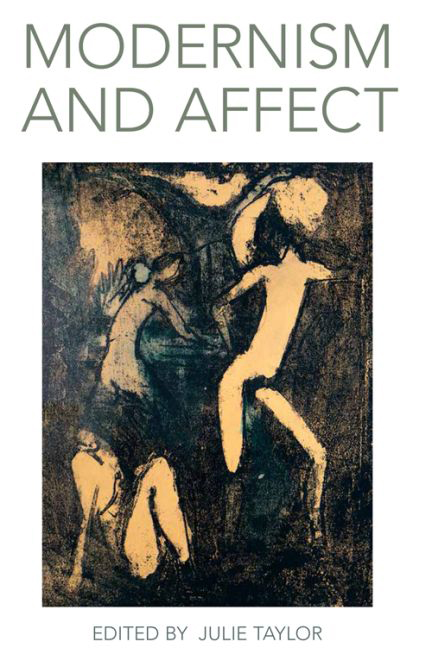Book contents
- Frontmatter
- Contents
- List of Illustrations
- Acknowledgements
- Notes on Contributors
- Introduction: Modernism and Affect
- 1 Mind, Body and Embarrassment in Henry James's The Awkward Age
- 2 The Trauma of Form: Death Drive as Affect in À la recherche du temps perdu
- 3 Logic of the Heart: Affective Ethical Valuing in T. E. Hulme and Max Scheler
- 4 The Line that Binds: Climbing Narratives, Ropework and Epistolary Practice
- 5 The Amplification of Affect: Tension, Intensity and Form in Modern Dance
- 6 Love and the Art Object
- 7 Animating Cane: Race, Affect, History and Jean Toomer
- 8 Fear and Precarious Life after Political Representation in Baudelaire
- 9 Bloom-Space of Theory: The Pleasure and the Bliss of Gerty MacDowell
- 10 From Odysseus to Rotpeter: Adorno and Kafka, Mimicry and Happiness
- 11 Making Happy, Happy-making: The Eameses and Communication by Design
- Index
7 - Animating Cane: Race, Affect, History and Jean Toomer
Published online by Cambridge University Press: 15 September 2017
- Frontmatter
- Contents
- List of Illustrations
- Acknowledgements
- Notes on Contributors
- Introduction: Modernism and Affect
- 1 Mind, Body and Embarrassment in Henry James's The Awkward Age
- 2 The Trauma of Form: Death Drive as Affect in À la recherche du temps perdu
- 3 Logic of the Heart: Affective Ethical Valuing in T. E. Hulme and Max Scheler
- 4 The Line that Binds: Climbing Narratives, Ropework and Epistolary Practice
- 5 The Amplification of Affect: Tension, Intensity and Form in Modern Dance
- 6 Love and the Art Object
- 7 Animating Cane: Race, Affect, History and Jean Toomer
- 8 Fear and Precarious Life after Political Representation in Baudelaire
- 9 Bloom-Space of Theory: The Pleasure and the Bliss of Gerty MacDowell
- 10 From Odysseus to Rotpeter: Adorno and Kafka, Mimicry and Happiness
- 11 Making Happy, Happy-making: The Eameses and Communication by Design
- Index
Summary
‘The only time that I think “Negro”’, wrote Jean Toomer to his close friend Waldo Frank in 1922, ‘is when I want a peculiar emotion which is associated with this name’ (2010a: 69). Like many of Toomer's statements about race, his allusion to the term ‘Negro’ as a kind of emotional shorthand poses a variety of interpretational possibilities. Does ‘peculiar’ simply mean ‘particular’, or is Toomer suggesting that there is something strange or perverse about African American feeling? Should we dismiss his comment as a problematic assumption of stereotypes about African American emotionality or should we concentrate on those scare quotes around ‘Negro’? And if ‘thinking “Negro”’ produces a certain feeling for Toomer, might it also (or instead) work the other way round: is the racialised subject in fact produced by the circulation of affects? We can start to think through such questions by considering Toomer's complex treatment of the relationships between race and affect in Cane (1923), his experimental cycle of poems, stories and sketches depicting African American life in the rural South and the urban North.
Toomer's work amply demonstrates the aesthetic continuities in the still-contested relationship between the Harlem Renaissance and ‘mainstream’ modernism, providing just one example of how these two overlapping cultural phenomena might together challenge and complicate our understanding of American modernism. Although commonly labelled a Harlem Renaissance writer, Toomer also participated in primarily white avant garde cultures, and his apparent celebration of African American feeling points to the significance of primitivism for historicising modernist uses and understandings of affect. Behind Toomer's comment about ‘a peculiar emotion’ seems to lie a persistent racist stereotype that links ethnic otherness to a form of heightened expressiveness, a stereotype that stimulated white modernist investments in ‘the primitive’ – which in the United States included the celebration of African American culture.
- Type
- Chapter
- Information
- Modernism and Affect , pp. 131 - 147Publisher: Edinburgh University PressPrint publication year: 2015



